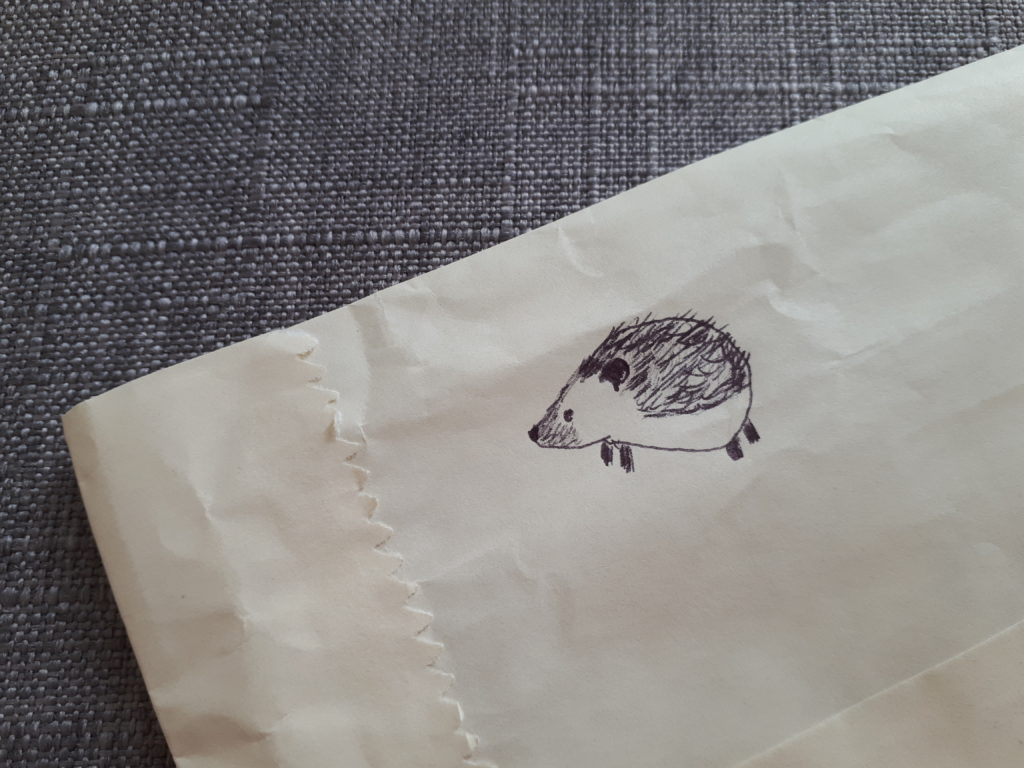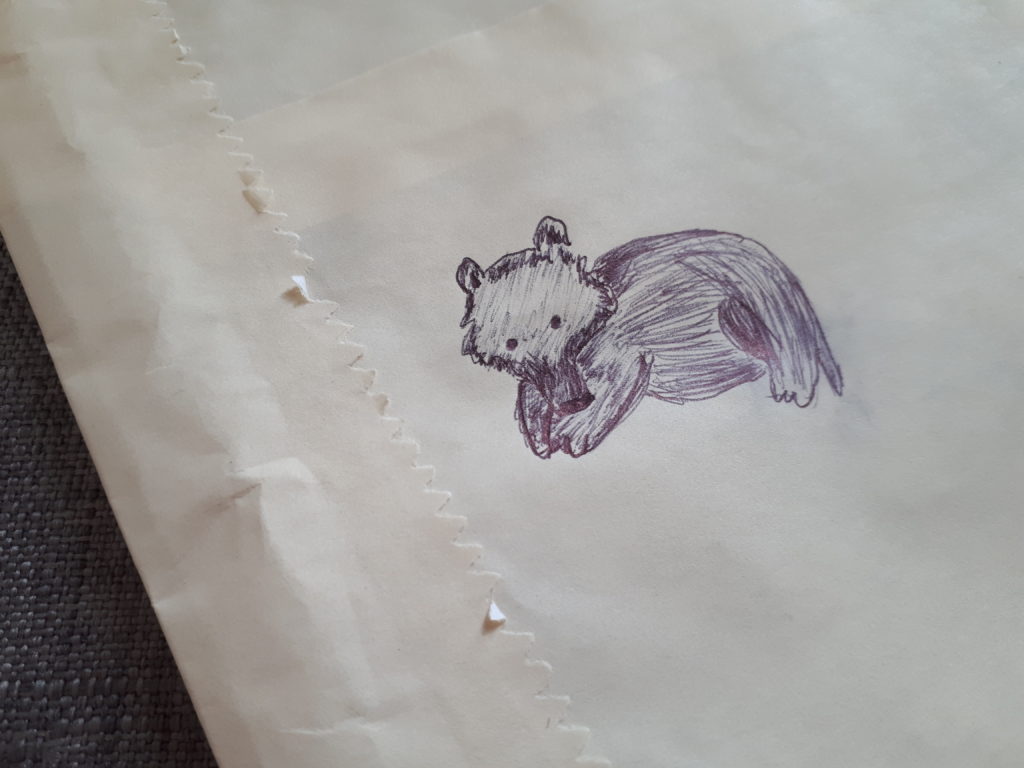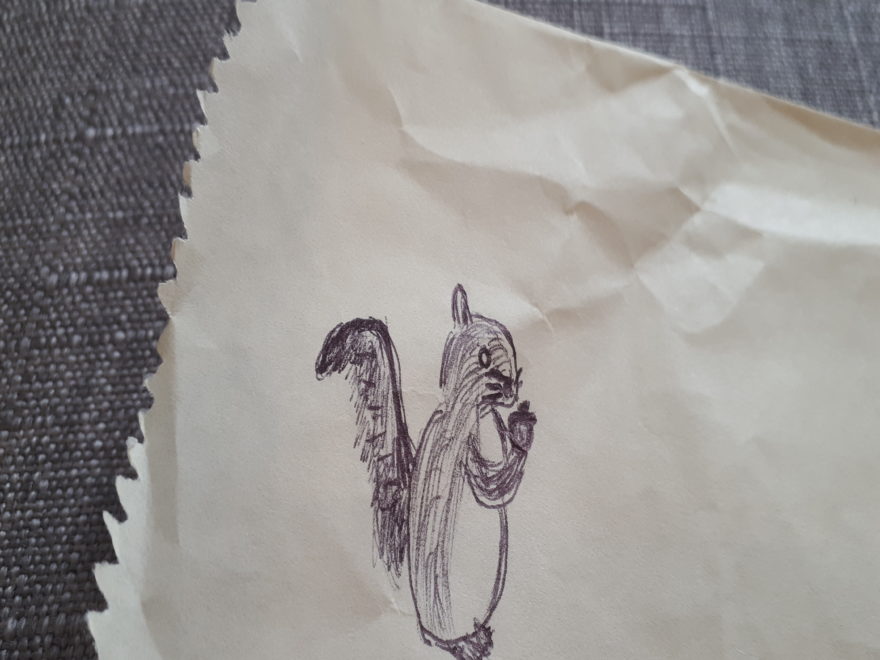For so many years, I took so much for granted. Most of us do. For me, it was being able to cross-country ski, hand-write a thank you card, lace up my skates, make and decorate fancy layer-cakes and cupcakes, ride a road (racing-style) bike, sew a Halloween costume, tie a good (marine) knot…
What do all of these activities have in common?
These actions all involve my right hand, which makes it difficult – sometimes impossible – for me to do them anymore. Yes, I can slap some icing onto a cupcake, and it will taste delicious. What I used to do, though, was much more than that; and so much more fun!
I’d using fancy icing and decorating techniques to transform my cupcake creations into animals, aircraft, Halloween beasts or monsters, and other designs. For birthdays, holidays, and other special occasions I’d come up with new cupcake designs.
But I can’t really use my right hand these days, apart from my thumb. Folks will often tell me to “just learn to use your left hand for that”, which is annoying as heck. My left hand lacks the almost 50 years of dexterity, practice, and skill that my right hand had gained in these specific techniques and movements.
It’s as though this fancy baking has always been a part of whom I am, a part of my identity. It seems silly, when I see it written down, but it’s true. I began baking with my Malta-born Scottish grandma when I was just a toddler; I’m told she had me icing cakes, cookies, and cupcakes before I could walk!
My husband’s three favourites were all Halloween cupcakes, made in different years. My ‘Killer’ cupcakes had pale frosting, with bright red blood-icing seeping out from where a candy knife was stabbed into the cupcake.
Then came the ‘Spider’ cupcakes, with creepy eyes and 8 jointed chocolate-coated licorice legs sticking out from the edges. For a later year, I found printed-paper spider-legs, wearing adorable sneakers ‘-)
At the top of his list were my ‘Frankenstein’ cupcakes. It took me almost an hour just to get the perfect sickly green tint to the icing, and they turned out very creepy-looking. Perfect for Halloween! My favourite cupcake creations were my aircraft cupcakes; probably because they took the longest to make. About 20 minutes to decorate each cupcake, after I’d put on the frosting…
Another thing that I’d always taken for granted was that I could draw. Not very well!! I’d never sell any of my drawings, or even (apart from here) show them to anyone. But I could sketch a basic scene, or a draw a design for a craft project that I wanted to create.
As an example, I used to draw designs for embroidery; I’d draw something, using a special transfer paper and pencil, and then iron it – transfer it – onto my embroidery fabric. I’ve embroidered countless items over the years, many for friends’ and relatives’ babies. Crib quilts, pillowcases, throw pillows for nursing and rocking chairs.
There was also come embroidery for adult clothing, with an odd specialty. I was in the Air Force reserve a number of years ago, and many of my friends also served – or are still active – in the military. When one of these friends came home from a combat zone, about 25 years ago, he mentioned that he was looking for a piece of clothing that he could wear to serve as a transition between that place and home.
He’d left the military shortly after returning to Canada, but only really felt comfortable wearing his combat jacket or shirt; like a jean jacket. But that wasn’t really appropriate for civilian life. So I proposed taking and old combat jacket, removing all the military insignia, and embroidering the back of it – with a design that he’d pick.
The idea was that his fatigue jacket would then look like something a civilian would wear. A ‘fashion’ item, because at the time military-inspired clothing was popular. He loved the idea, and my needlework specialty was born; embroidered combat shirts. One of his friends asked about his shirt, and sent me a letter… then some of their other friends saw their shirts… I ended up embroidering about twenty of these in a five-year period.
Being able to draw, much like all the other creative activities I used to love, is something that Complex Regional Pain Syndrome (CRPS) had stolen from me. This disease is best known for causing severe neuropathic pain. But it also affects all of the joints in each of my fingers, as well as my wrist. It’s almost impossible to hold a pen or a pencil, and my finger and wrist joints don’t move properly anymore.
Over the past month or so I’ve figured out a way to handwrite one-line notes, by holding my hand much differently than I used to. I can’t apply much pressure with my fingers, so use my left hand to apply weight and to guide the pen. It’s very awkward, but at least now I can write “Happy Birthday” into a greeting card!
My husband and I are on vacation this week, and pre-CRPS I’d have brought craft supplies with me; something to do while watching a fire burning in a fireplace after supper, or to relax after a day of day-hiking up and down mountains. My husband loves to read newspapers, so treats himself to multiple versions when we’re away; when we need to recover from our outdoor sports, in the evenings, he’d read and I’d do crafts.
This morning we were wandering through the local shops, in a little village in the mountains; Lake Placid. Home of the 1932 and 1980 Winter Olympics. Browsing the aisles in a bookshop, something caught my eye. A book called “How to Draw Almost Every Animal”(1), with very simple – almost childlike – drawings on the cover. The cover showed a couple of step-by-step drawings.
I’ve come to realize that I can’t go back to drawing the way I used to, but what if I could re-teach myself to draw – the same way I’ve taught myself how to write a different way? I bought the book! Soon after that, we stopped for coffee…
As soon as we were seated, at a tiny little table, I pulled out a pen and the only paper I had with me; the paper bag from the bookshop… These are my very first creations, using ideas from that book – and same two-handed technique that I use to write short notes in birthday cards.

These are my first creations, using ideas from that book and my two-handed drawing technique. It must have looked very strange, me siting there with the book open on my lap, drawing two-fisted on a paper bag in a coffee shop.
They’re not great – and look like something a child drew with crayons – but it was a lot of fun to draw again. You can tell that by the time I got to bear’s hindquarters, my hand was in too much pain to finish the drawing.

I should have stopped when my neuropathic pain level started to spike, to flare up and worsen, but instead I was stubborn and kept going. I wanted to finish three little drawings while we sipped our coffees. As a result, I muffed this little drawing, and then had to live with horribly excruciating pain for hours on end.
From now on I’ll try to do just one drawing at a time, and to focus more on enjoying the experience. Something else that living with a chronic pain condition has taught me… or rather still is teaching me; to just slow down. Or to stop.
This still doesn’t come easy to me, having to put something aside because I’m in too much pain to finish it. It feels like giving up, so I’m still working to convince myself that planning to finish something later isn’t the equivalent of ‘giving up’ on it. Or giving up on myself, because I won’t do that. It’s just not in my nature.
It was important for me to write this post, to remind you that learning to live with this type of disease isn’t something that you ever really finish; it’s a work in progress. Don’t get discouraged if you can’t do something, because you may find a way back to it in the future. It could be something as simple as seeing a book on a shelf…
You’ll probably have to adapt your technique, as well as your expectations. Sometimes, like in this case, it may take a couple of years for a catalyst or spark of an idea. In the meantime, I’m drawing hope by attempting to teach myself to draw again – a different way ‘-)
Thanks for reading, and feel free to DM over on Instagram or Twitter if you’d like to chat about CRPS or another chronic pain condition or rare disease. The volume of obscene comment-spam from overseas has forced me to completely disable the comments feature here; I hope you understand that decision!
Reference:
Chika Miyata. How to Draw Almost Every Animal: An Illustrated Sourcebook. The Quarto Group. 2017. Book information:
https://books.google.ca/books/about/How_to_Draw_Almost_Every_Animal.html?id=auFaMQAACAAJandsource=kp_book_descriptionandredir_esc=y

